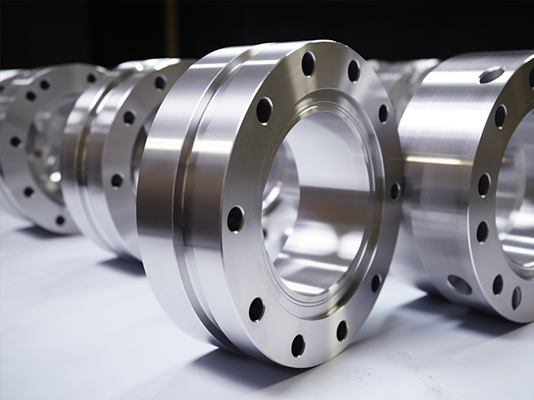Introduction of CNC Precision Parts
CNC precision parts are high-precision mechanical components produced by CNC machining technology, widely used in industrial equipment, automotive manufacturing, communications electronics, medical equipment, aerospace and other fields.CNC machining, or computer numerical control machining, refers to the use of pre-programmed control of machine tool movement, through high-precision cutting tools on metal or non-metallic materials, so as to realize the complex shape of the parts of the fine Manufacturing.
The core features of CNC precision parts are “high accuracy”, “high consistency”, “high complexity adaptability”, which plays an irreplaceable role in the current precision engineering and automated production. It plays an irreplaceable role in the current precision engineering and automated production. Especially in the context of modern products with extremely high requirements on dimensional error, tolerance, surface treatment, etc., CNC precision machining has almost become the standard choice.
Common materials and processing characteristics

There is a wide range of materials involved in CNC precision parts, and depending on the usage scenario, there are clear requirements for the mechanical properties, corrosion resistance, and processability of the materials. Common materials include:
- Aluminum alloy (6061, 7075, etc.): lightweight, good thermal conductivity, easy to process, suitable for aviation components, automotive structural components, electronic enclosures;
- Stainless steel (304, 316, 303, etc.): strong corrosion resistance, suitable for food machinery, medical equipment, chemical equipment;
- Carbon steel and alloy steel: high strength, used for load-bearing structural components;
- Copper and brass: excellent electrical and thermal conductivity, suitable for electrical connectors;
- Titanium alloy: high strength, light weight, used for medical implants, spacecraft parts;
- Plastic materials (POM, PEEK, ABS, PC, etc.): suitable for insulating parts, light duty components, transmission mechanisms, etc.
For different materials, the machining method, tool selection and cooling method are also different. For example, stainless steel processing is prone to work hardening, the need to control the cutting speed and feed; while the machining of aluminum parts to emphasize the sharpness of the tool and chip removal efficiency.
Typical Process Flow
1.Drawing analysis and process planning
According to the 2D drawings or 3D models provided by customers, engineers and technicians analyze the machining parts, dimensional accuracy, tolerance requirements, assembly relationship and other information to determine the machining sequence and process path.
2.Programming and Simulation
Use CAM software such as Mastercam, UG NX, SolidCAM, etc. to generate CNC program (G code) and carry out cutting track simulation to verify the feasibility of the program and machining safety.
3.Equipment Setting and Trial Cutting
Set the workpiece coordinate system, tool change point, speed parameters, etc. on CNC lathe, CNC milling machine, 5-axis interlocking machine, etc., and carry out trial cutting first to check the size and process effect.
4.Batch processing and online inspection
After clamping the workpiece, batch running machining program. Some critical dimensions need to be inspected on-line or in the middle of the process with the use of coordinates, micrometers, height gauges and other equipment.
5.Surface treatment and deburring
After cutting is completed, surface treatment processes such as sandblasting, electroplating, anodizing, polishing, etc. are selected according to the application of the product. At the same time, burrs are removed manually or automatically to ensure smooth edges.
6.Final Inspection and Packaging
Full or random inspection of product appearance, size, tolerance, thread accuracy, etc., and sort and pack according to order requirements.
Processing equipment and capacity
The equipment used in the production of CNC precision parts covers a wide range of different structures and precision requirements of the parts need to match different types of CNC machine tools. The main types of equipment include:
- CNC numerical control lathe: suitable for processing shafts, bushings and other rotating parts;
- CNC machining centers (vertical and horizontal): suitable for plane and complex curved surface parts, with automatic tool change function;
- Five-axis linkage machining center: it can complete complex processing of multiple surfaces in one clamping, suitable for precision molds and aviation parts;
- Automatic feeding CNC lathe: suitable for small parts, high-volume processing;
- Engraving and milling machine, small precision engraving machine: for fine parts or tiny structure processing;
- CNC grinding machine, spark machine, wire cutting machine, etc.: suitable for high hard materials or high surface accuracy processing.

